
Television & New Media
Scope & Guideline
Illuminating the Evolution of Media in Modern Society
Introduction
Aims and Scopes
- Cultural Studies of Television:
The journal focuses on the cultural implications of television, exploring how media narratives and representations reflect and influence societal values, identities, and power structures. - Transnational Media Flows:
Research often examines the global circulation of television content, investigating how local cultures adapt and reinterpret media from different contexts, thereby contributing to the discourse on globalization. - Digital and Streaming Media:
A significant aspect of the journal is its analysis of the impact of digital and streaming platforms on traditional television paradigms, including audience engagement and content distribution. - Gender, Race, and Identity:
The journal emphasizes studies that interrogate representations of gender, race, and sexuality in television, focusing on how these identities are constructed and contested within media narratives. - Political Economy of Media:
It critically examines the economic frameworks that underpin television production and distribution, analyzing how these frameworks affect content creation and viewer access. - Technological Influences on Media Practices:
The journal explores how technological advancements, particularly in digital media, influence television content, production practices, and audience experiences.
Trending and Emerging
- Cancel Culture and Digital Activism:
A significant trend encompasses the examination of cancel culture and its implications within digital spaces, reflecting broader societal debates on accountability, representation, and activism. - Impact of Streaming Services on Global Media:
Recent publications increasingly focus on the role of streaming platforms like Netflix and their influence on global media production, distribution, and consumption patterns, indicating a critical shift in media studies. - Intersectionality in Media Representation:
There is a growing emphasis on intersectional analyses that explore the complexities of identity in media representations, particularly concerning race, gender, and sexuality, showcasing a demand for more nuanced discussions. - The Role of Social Media in Television Consumption:
Emerging themes also highlight the interplay between social media and television, particularly how platforms influence audience engagement, content promotion, and viewer interactions. - Mental Health and Media Representation:
An increasing number of studies are addressing how mental health issues are portrayed in media, particularly in the context of the pandemic, reflecting a societal shift towards awareness and discussion of mental health.
Declining or Waning
- Traditional Television Formats:
There is a noticeable decrease in research centered around traditional television formats and linear broadcasting, as the focus shifts towards digital and streaming platforms that dominate the current media landscape. - Historical Analysis of Television:
Papers that delve into historical perspectives of television have become less frequent, indicating a potential waning interest in retrospective analysis in favor of contemporary and future-oriented studies. - Cultural Critique of Reality Television:
While reality television has been a staple of media analysis, recent publications suggest a reduced emphasis on critique of reality formats, possibly as new forms of media and engagement capture scholarly attention.
Similar Journals
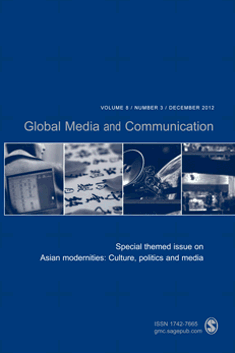
Global Media and Communication
Connecting Ideas Across Borders in Media and CommunicationGlobal Media and Communication is a premier journal dedicated to advancing the fields of media and communication studies, published by SAGE Publications Ltd. With an ISSN of 1742-7665 and an E-ISSN of 1742-7673, this journal offers a platform for scholarly discourse and innovative research that explores the intricate relationships between global media practices and communication strategies. Recognized as a Q1 journal in both the Arts and Humanities (Miscellaneous) and Communication categories for 2023, it stands out in its commitment to delivering high-quality, peer-reviewed articles that contribute to the understanding of contemporary media landscapes. Located in London, United Kingdom, the journal benefits from being at the heart of cultural and digital innovation. Researchers, professionals, and students can look forward to insightful articles that not only critique existing frameworks but also propose new methodologies, ensuring that Global Media and Communication remains a vital resource for anyone interested in navigating the evolving dynamics of media and communication on a global scale.

Film Fashion & Consumption
Exploring the Nexus of Visual Culture and Consumer BehaviorFilm Fashion & Consumption is an innovative academic journal published by INTELLECT LTD, focusing on the interdisciplinary exploration of the intertwined domains of film, fashion, and cultural consumption. Established in 2019, this journal has rapidly become a significant platform for scholars, practitioners, and students alike, contributing to critical discussions on how visual culture shapes consumer behaviors and social narratives. With an impact factor reflecting a growing influence in the fields of Communication, Cultural Studies, History, and Visual Arts, it holds respectable positions in its respective quartiles as of 2023. Although it is not an open-access journal, it provides essential insights and research articles that inform and challenge prevailing notions around media and style. The journal's Scopus rankings highlight its relevance, particularly within the realms of Visual Arts and Cultural Studies, making it a valuable resource for anyone engaged in the analysis of contemporary visual trends.
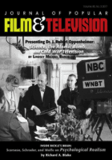
JOURNAL OF POPULAR FILM AND TELEVISION
Transforming Perspectives Through Film and Television Analysis.JOURNAL OF POPULAR FILM AND TELEVISION, published by Routledge Journals, Taylor & Francis Ltd, stands as a significant platform for academic discourse in the realms of cultural studies, visual arts, and performing arts. With its ISSN: 0195-6051 and an evolving digital presence indicated by its E-ISSN: 1930-6458, the journal has carved out a respected niche since its inception in 1978, continuing to contribute to scholarly discussions through 2024. Its impact within the academic community is underscored by a Q3 ranking in Cultural Studies and a Q2 ranking in Visual Arts and Performing Arts for 2023, highlighting its relevance across diverse fields. Notably, with a Scopus ranking placing it in the 74th percentile among visual arts and performing arts journals, it serves as an essential reference point for researchers, professionals, and students committed to the critical examination of film and television. Although not an open-access journal, it provides valuable insights and analysis that enrich understanding of popular media's impact on society. The journal's location in the United States, with a headquarters in Abingdon, England, further affirms its international scope and influence.

Critical Studies in Television
Charting the Future of Television ResearchCritical Studies in Television is a leading academic journal published by SAGE Publications Ltd, dedicated to exploring the intricate dimensions of television within the fields of Communication and Cultural Studies. Since its inception, this journal has become an essential resource for researchers, professionals, and students alike, particularly as it navigates the evolving landscape of television studies from 2014 to 2024. With an impressive impact factor, the journal achieved notable rankings in 2023: it is positioned in the Q2 quartile for Communications and the Q1 quartile for Cultural Studies. Recognized by Scopus with a rank of #160 in Cultural Studies and #193 in Communication, it reflects its growing influence and relevance in these academic arenas. While currently not available through an Open Access model, readers are encouraged to engage with its diverse and critical contributions that foster a deep understanding of television’s role in contemporary culture.

KOREA JOURNAL
Illuminating the Rich Tapestry of Korean History and ArtsKOREA JOURNAL, published by the Academy of Korean Studies, stands as a significant scholarly resource in the fields of Cultural Studies, History, Literature and Literary Theory, and Visual Arts and Performing Arts. With an impressive impact factor highlighted by its Q1 and Q2 quartile rankings across multiple categories, the journal facilitates the dissemination of innovative research that contributes to the understanding of Korean society and culture, offering a platform for both local and international scholars. Open Access since 2020, ensures that its articles are readily available to a wide audience, thereby promoting broader academic engagement. By featuring diverse interdisciplinary studies, the journal aims to bridge gaps across various fields and foster dialogue among researchers, practitioners, and students alike. Located in Seongnam-si, Gyeonggi-do, South Korea, it continues to play an essential role in advancing scholarship related to Korean studies while maintaining academic rigor and quality.
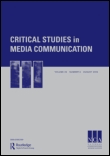
CRITICAL STUDIES IN MEDIA COMMUNICATION
Innovating Perspectives on Media InteractionsCRITICAL STUDIES IN MEDIA COMMUNICATION, published by Routledge Journals, Taylor & Francis Ltd, stands as an influential platform for discourse in the field of communication studies. With an ISSN of 1529-5036 and an E-ISSN of 1479-5809, the journal provides an invaluable resource for researchers, professionals, and students exploring the complexities of media interactions and their socio-cultural implications. The journal has established a solid reputation, evidenced by its categorization as Q2 in Communication for 2023 and its impressive Scopus ranking of #189 out of 511 within the Social Sciences _ Communication category, placing it in the 63rd percentile. Operating out of the United Kingdom, CRITICAL STUDIES IN MEDIA COMMUNICATION encompasses a scope that debates critical theory versus applied media research, fostering interdisciplinary dialogue that addresses emerging trends and critical issues within the media landscape. With a commitment to open access and forward-thinking scholarship, this journal not only enhances academic understanding but also actively shapes practices within the communication field as it continues through its converged years from 1996 to 2024.
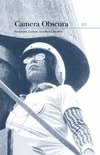
CAMERA OBSCURA
Pioneering Scholarly Dialogues in Visual Arts and GenderCAMERA OBSCURA, an esteemed journal published by DUKE UNIVERSITY PRESS, serves as a vital platform at the intersection of Visual Arts and Gender Studies. With its ISSN 0270-5346 and E-ISSN 1529-1510, this journal has been an influential contributor to critical discussions in cultural theory and visual culture from 2002 to 2024. Notably categorized in the Q4 quartile for Gender Studies and Q2 for Visual Arts and Performing Arts in 2023, CAMERA OBSCURA boasts a Scopus rank that reflects its growing impact within the academic community. Although currently not offered as an open-access publication, its rigorous peer-reviewed content remains crucial for researchers, professionals, and students alike, facilitating a deeper understanding of how visual representation shapes and is shaped by societal constructs. Set in the heart of the United States, the journal's commitment to exploring the complexities of gendered visuality emphasizes its importance within contemporary scholarship in these vibrant fields.

Journal of British Cinema and Television
Unveiling the Cultural Impact of Screen NarrativesJournal of British Cinema and Television, published by Edinburgh University Press, is a leading academic journal that explores the dynamic interplay between British cinema and television within the context of cultural studies. With an ISSN of 1743-4521 and E-ISSN of 1755-1714, this journal provides a platform for scholarly discourse, enabling researchers, professionals, and students to engage with critical analyses of screen media and its socio-political impact. As a Q3 journal in Communication and a Q1 journal in Visual Arts and Performing Arts for 2023, it occupies an influential position, particularly in the Arts and Humanities, where it ranks in the 90th percentile. The journal's scope encompasses a wide range of topics, from historical perspectives to contemporary practices in British visual culture, making it essential reading for anyone interested in the evolution and significance of screen studies in the UK. While it is not an open-access publication, the rigorous peer-review process ensures high academic standards and contributes to its esteemed reputation in the field. As it continues to converge from 2004 to 2024, the Journal of British Cinema and Television remains a vital resource for those seeking to deepen their understanding of British media and its global resonance.
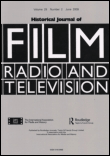
HISTORICAL JOURNAL OF FILM RADIO AND TELEVISION
Decoding the Cultural Impact of Media Through TimeHISTORICAL JOURNAL OF FILM RADIO AND TELEVISION, published by Routledge Journals, Taylor & Francis Ltd, is a leading academic publication that explores the intricate narratives of film, radio, and television throughout history. With an ISSN of 0143-9685 and an E-ISSN of 1465-3451, this journal has established itself as a vital resource for researchers and professionals within the fields of communication, history, and the visual arts, reflecting its commitment to rigorous scholarship since its inception in 1981. The journal occupies a reputable position in the academic landscape, recently categorized as Q4 in Communication and History, and Q3 in Visual Arts and Performing Arts, indicating its relevance in these fields. Despite the absence of Open Access options, the publication remains accessible to institutions and individuals eager to engage with critical analyses and historical perspectives on visual media. With its broad scope and historical emphasis, the HISTORICAL JOURNAL OF FILM RADIO AND TELEVISION is crucial for understanding the evolution of media and its impact on culture, making it an essential read for scholars and practitioners alike.
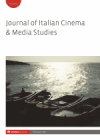
Journal of Italian Cinema and Media Studies
Celebrating the Cultural Impact of Italian Film and MediaThe Journal of Italian Cinema and Media Studies, published by INTELLECT LTD, is a premier academic journal dedicated to the exploration and critical analysis of Italian cinema and media. Since its inception in 2013, the journal has contributed significantly to the discourse surrounding the intersections of film, culture, and society, making it a vital resource for researchers and professionals alike. With an impressive span of converged years through 2024 and categorized in various quartiles, such as a Q1 ranking in Visual Arts and Performing Arts, the journal stands out in its field. Although it does not currently offer open access, the rigorous scholarship it publishes is accessible to a wide audience, contributing to ongoing dialogues in communication and cultural studies. The journal's impact is further reflected in its Scopus rankings, positioning it within the 64th percentile in Visual Arts and Performing Arts and the 21st percentile in Communication. As a critical avenue for scholarly exchange and creative inquiry, the Journal of Italian Cinema and Media Studies is essential for anyone engaged in the study of media, culture, and the arts.